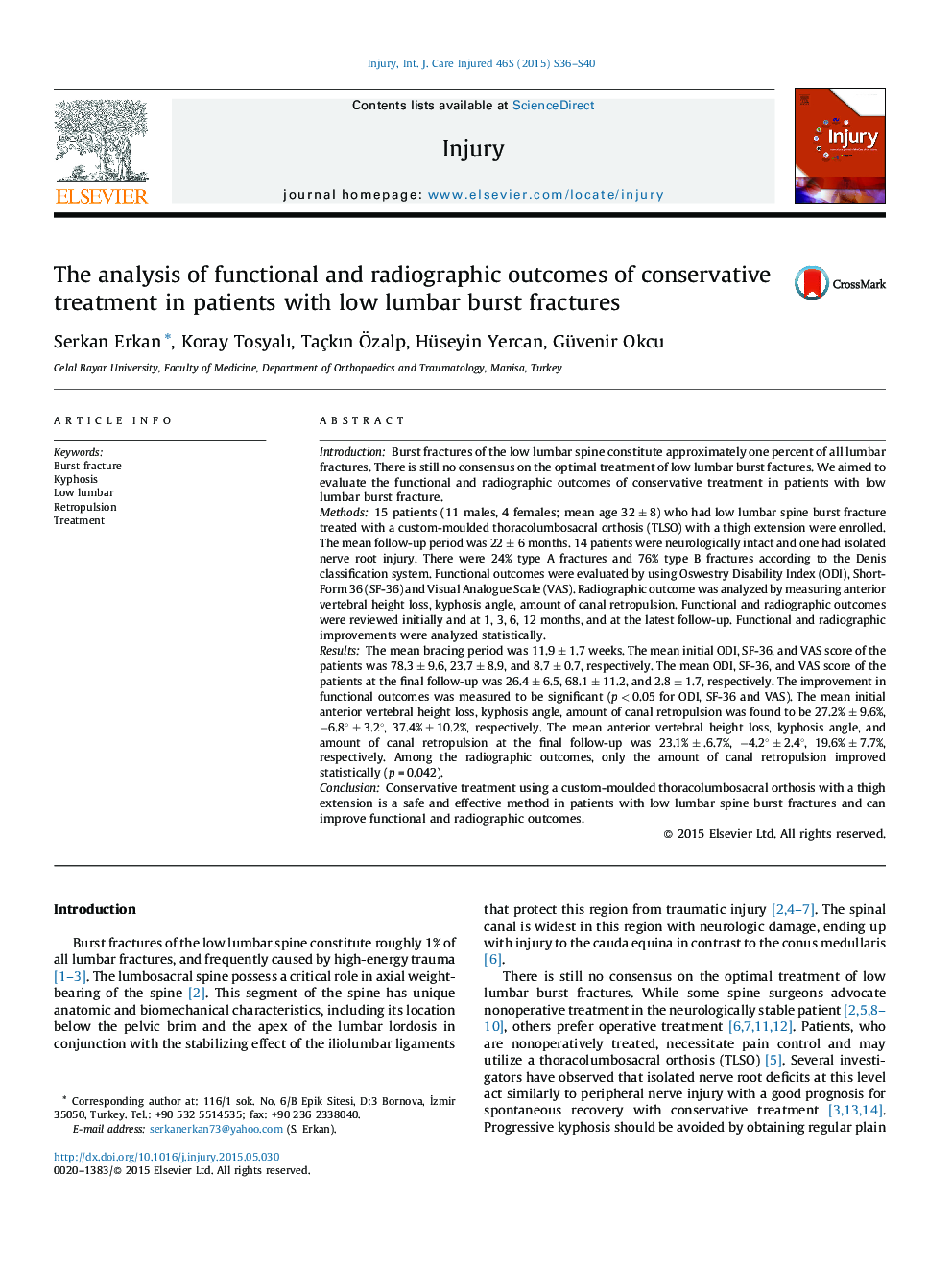| Article ID | Journal | Published Year | Pages | File Type |
|---|---|---|---|---|
| 3239255 | Injury | 2015 | 5 Pages |
IntroductionBurst fractures of the low lumbar spine constitute approximately one percent of all lumbar fractures. There is still no consensus on the optimal treatment of low lumbar burst factures. We aimed to evaluate the functional and radiographic outcomes of conservative treatment in patients with low lumbar burst fracture.Methods15 patients (11 males, 4 females; mean age 32 ± 8) who had low lumbar spine burst fracture treated with a custom-moulded thoracolumbosacral orthosis (TLSO) with a thigh extension were enrolled. The mean follow-up period was 22 ± 6 months. 14 patients were neurologically intact and one had isolated nerve root injury. There were 24% type A fractures and 76% type B fractures according to the Denis classification system. Functional outcomes were evaluated by using Oswestry Disability Index (ODI), Short-Form 36 (SF-36) and Visual Analogue Scale (VAS). Radiographic outcome was analyzed by measuring anterior vertebral height loss, kyphosis angle, amount of canal retropulsion. Functional and radiographic outcomes were reviewed initially and at 1, 3, 6, 12 months, and at the latest follow-up. Functional and radiographic improvements were analyzed statistically.ResultsThe mean bracing period was 11.9 ± 1.7 weeks. The mean initial ODI, SF-36, and VAS score of the patients was 78.3 ± 9.6, 23.7 ± 8.9, and 8.7 ± 0.7, respectively. The mean ODI, SF-36, and VAS score of the patients at the final follow-up was 26.4 ± 6.5, 68.1 ± 11.2, and 2.8 ± 1.7, respectively. The improvement in functional outcomes was measured to be significant (p < 0.05 for ODI, SF-36 and VAS). The mean initial anterior vertebral height loss, kyphosis angle, amount of canal retropulsion was found to be 27.2% ± 9.6%, −6.8° ± 3.2°, 37.4% ± 10.2%, respectively. The mean anterior vertebral height loss, kyphosis angle, and amount of canal retropulsion at the final follow-up was 23.1% ± .6.7%, −4.2° ± 2.4°, 19.6% ± 7.7%, respectively. Among the radiographic outcomes, only the amount of canal retropulsion improved statistically (p = 0.042).ConclusionConservative treatment using a custom-moulded thoracolumbosacral orthosis with a thigh extension is a safe and effective method in patients with low lumbar spine burst fractures and can improve functional and radiographic outcomes.
